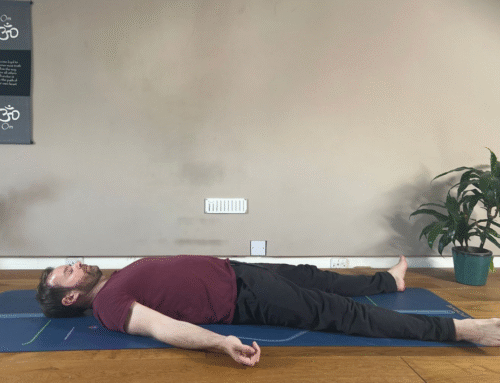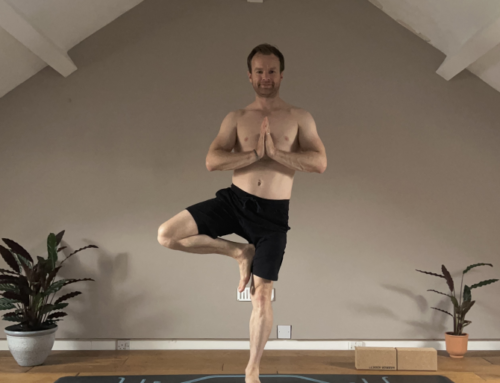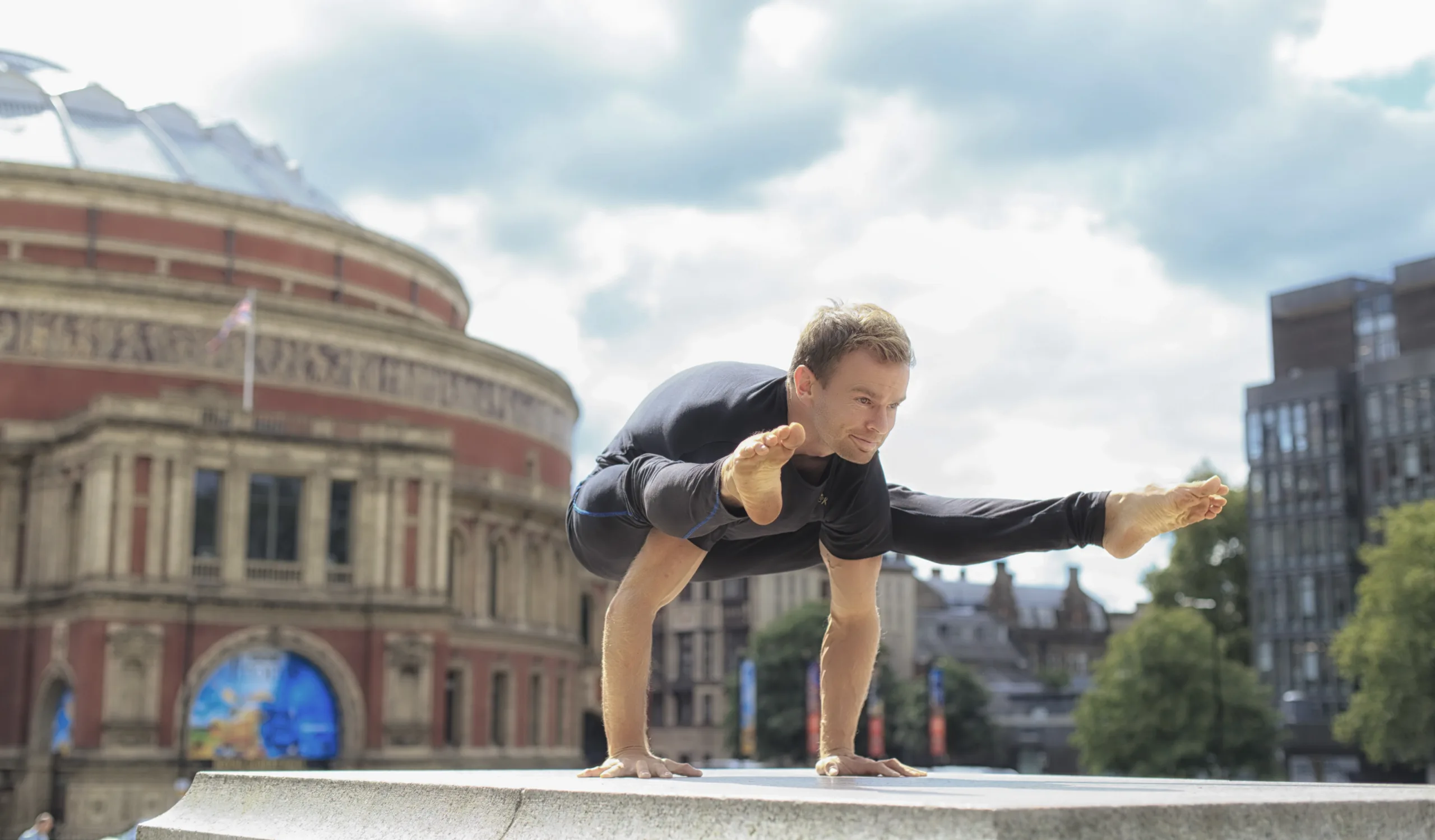
The Power of Tittibhasana – Firefly Pose: Steps, Benefits, and Variations
Hello! I’m Dav Jones, and I’m thrilled to support your yoga journey with insights into various practices, no matter your experience level. Today, we’ll dive into the Firefly Pose (Tittibhasana) steps, benefits, and variations. If you’re looking to enhance your yoga asana practice, you’re in the perfect place. Let’s get into breaking down Tittibhasana.
Understanding Firefly Pose
The Firefly Pose, also known as Tittibhasana is more than just a physical challenge—it’s a fun way to test your balance and get flexible. This pose is a test to one’s strength, flexibility and poise.
- Sanskrit: Tittibhasana
- Pronunciation: Tit-tib-HA-sa
- Meaning: This pose is like a firefly—light and quick, showing the joy and freedom you feel in your yoga practice.
Prepare Yourself with these Preparatory poses
To prepare your body for Firefly Pose, it’s important to warm up the body with some key preparatory poses.
1. Wrist Warm-up: Don’t skip these! Warming up your wrists will pay off, especially since you’ll be supporting all of your body weight on them in this pose. A wrist warm-up of around 10-15 minutes is recommended.
2. Hamstring & Adductor muscles to be Stretched: Try some deep forward bends to stretch out the hamstrings, along with postures that stretch the inner thigh muscles known as the adductor muscles.
Poses to stretch the hamstrings group:
Supta Padangusthasana
Pyramid Pose
Ardha Hanumanasana (Half-Splits)
Poses to stretch the adductor group:
Upavistha Konasana (Seated Wide-Legged Forward Fold)
Prasarita Padottanasana (Standing Wide-Legged Forward Fold)
Uttana Padasana (Lizard Pose)
3. Core Activation: Strong core muscles are crucial for balancing and holding the Firefly Pose. There are four primary groups of abdominals. The Rectus Abdominus – commonly known as the ‘six-pack’ muscles – are particularly worth awakening when it comes to preparing the abs for Tittibhasana.
Pose like:
Forearm Plank Holds
Hollowbody Plank Holds
Navasana (Boat Pose)
Step-by-Step Practice For Firefly Pose (Tittibhasana)
Let’s explore the steps for the Firefly Pose, or Tittibhasana, which helps enhance balance, flexibility, and playfulness.
1. Start in Malasana Pose (Squat)

Begin a deep squat with your feet slightly wider than your hips.
2. Thread the Arms through Your Legs:

Thread your arms through the inside of your legs and lift the hips.
3. Use Your Arms as a Shelf:
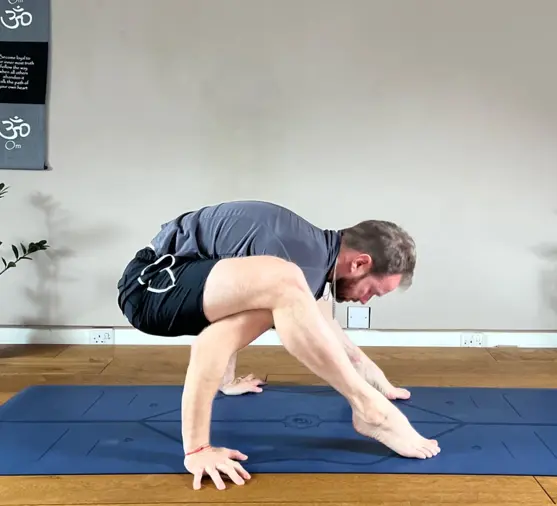
Place the hands about a foot distance behind the heels of the feet. Hug your inner thighs against the upper arms. Sit the underside of your legs on the triceps of the arms.
4. Lift your Hips, Squeeze your Legs and Round your Spine:
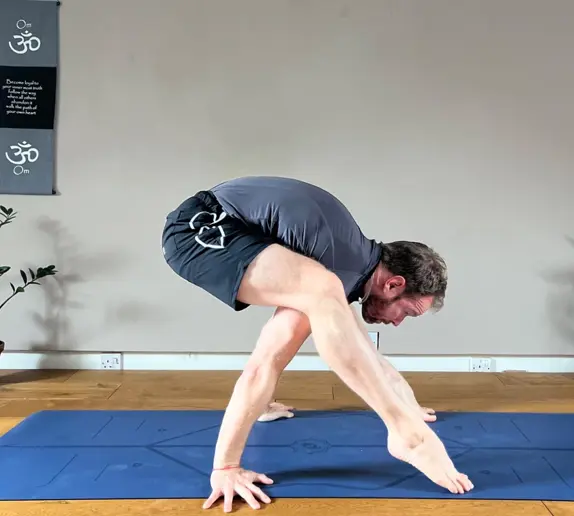
Simultaneously lift your hips, hug your legs in and round your spine. This position is actually a lot harder than it looks. By accessing this shape, the lift-off into Firefly is a shift in weight of the hips.
5. Lift-Off
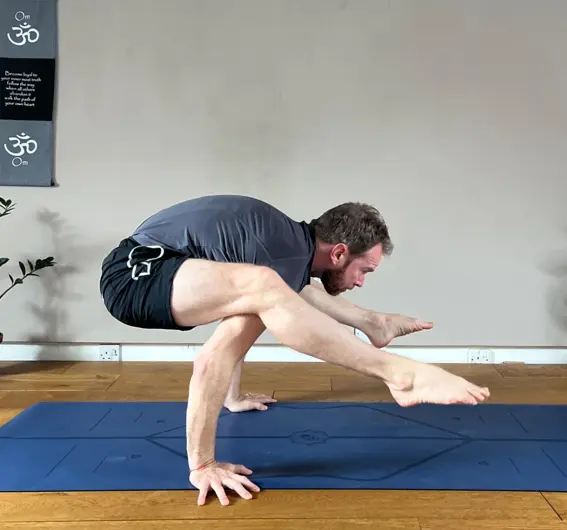
Keeping the pointers from step 5, slowly lower your hips by a fraction as the feet peel off the floor.
6. Hold the Pose – Tittibhasana
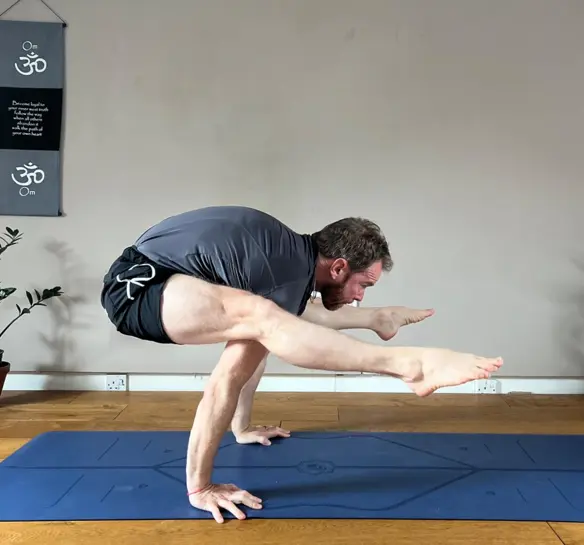
Once you’ve found the balance in Tittibhasana, work towards straightening the legs and arms. See if you hold Firefly for 5 breaths and slowly release the posture coming back into Malasana.
Benefits of Firefly Pose
1. Physical Benefits
- Core Strength: The Firefly Pose is highly demanding on the abdominal muscles. Maintaining balance and the lifted position requires a strong core, which can help improve overall stability in the torso.
- Improved Arm and Shoulder Strength: This poses significant challenges to the muscles in the arms and shoulders. Holding your body up with your arms helps build muscle endurance and strength in the upper body, including the triceps, and shoulders .
- Enhanced Flexibility: Firefly Pose stretches the hamstrings and inner thighs. This can lead to improved flexibility in the hips and legs, which can help support the movement potential of the individual.
- Toning of the Legs: Despite the focus on arms and core, Tittibhasana also helps tone the legs through the adductor muscle group and the quadriceps.
2. Mental Benefits
- Increased Focus and Concentration: The Firefly Pose requires and develops significant mental focus and concentration. This can help improve your overall mental clarity and ability to concentrate in other areas of your life .
3. Energetic Benefits
- Stimulation of the Manipura Chakra: The Firefly Pose is associated with the Manipura Chakra, located around the navel. This chakra is the centre of vitality and willpower; activating this chakra can enhance your energy levels and motivation .
The Use of Props For Firefly Pose
Firefly Pose with Blocks
How to Do It:
- Place two yoga blocks on the floor.
- Assume the starting position for Firefly, but with each hand resting on a block for extra height.
- This allows you to lift into the pose even if flexibility and balance are limiting factors.
Benefits:
- Provides extra support and height, making it easier to lift your torso and straighten your legs.
- Helps beginners get a feel for the final pose’s requirements without full strength or flexibility.
Safety and Precautions for Firefly Pose
When practising the Firefly Pose, practice with patience and unwavering concentration :
- Tittibhasana incorporates full body integration. Warm-up the wrists, hips, spine and abdominals prior to practising Firefly Pose.
- Don’t rush; take it slow and move into the pose step by step.
- If you feel any pain, especially in your wrists or shoulders, stop immediately.
- Beginners should try using yoga blocks or a strap to make it easier and safer.
- Always listen to your body and be mindful as to not exert your efforts.
Final Thought
We’ve explored Firefly Pose, highlighting its steps and benefits for enhancing your yoga asana practice. If you’re interested in deepening your practice, consider joining the Dav Jones online yoga classes on Patreon. If you’re looking for a more tailored/specific approach to your practice, then take a look at the Dav Jones Yoga mentorship program.






